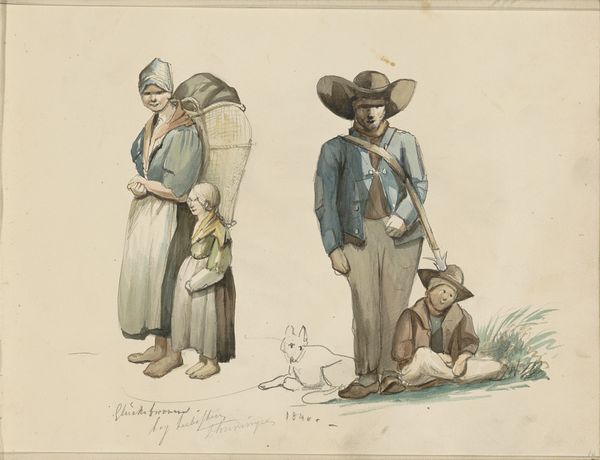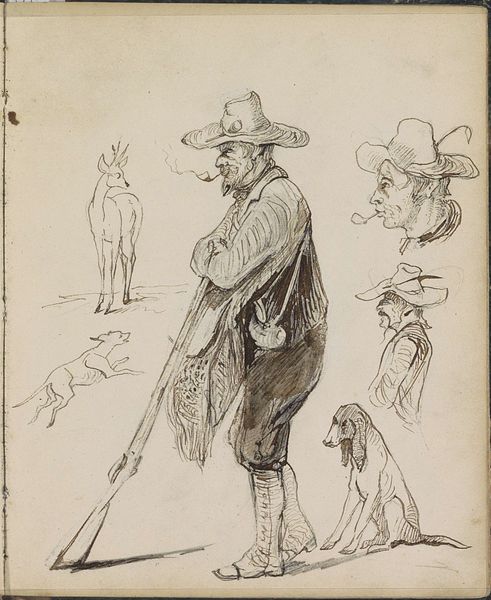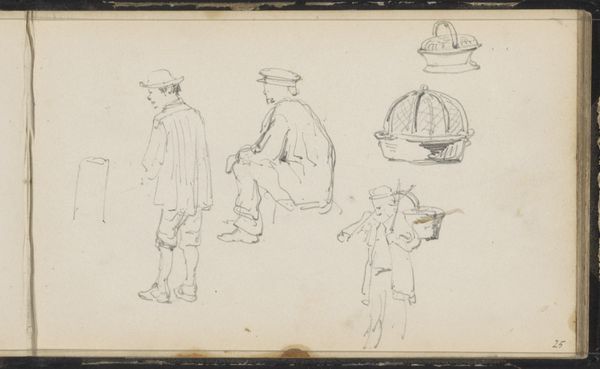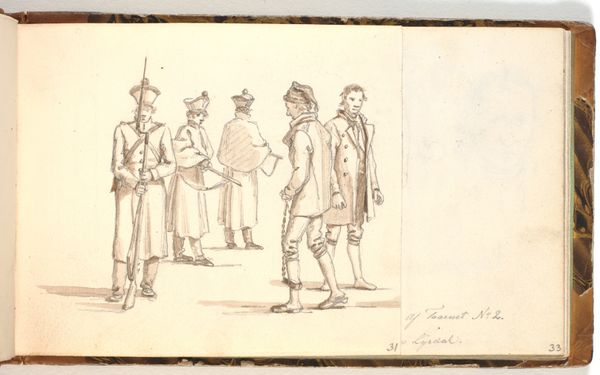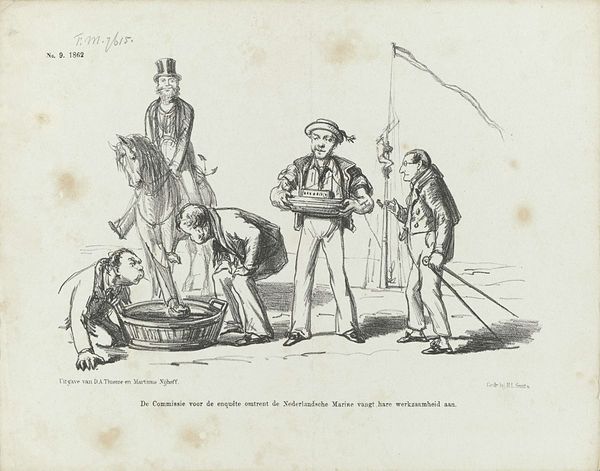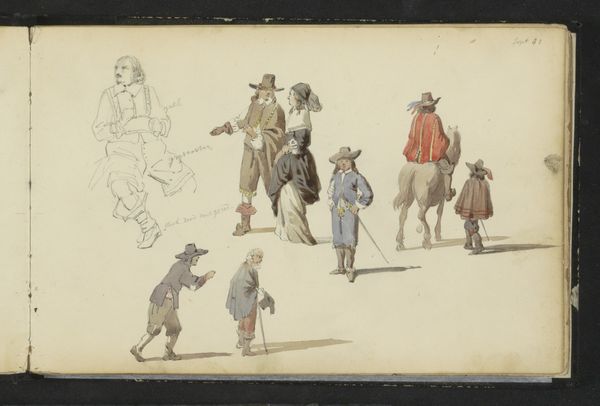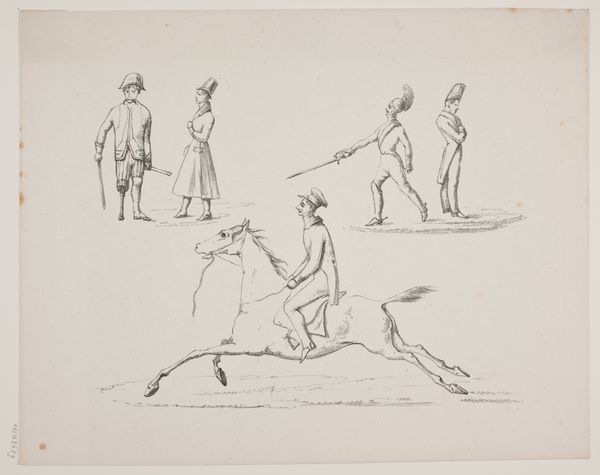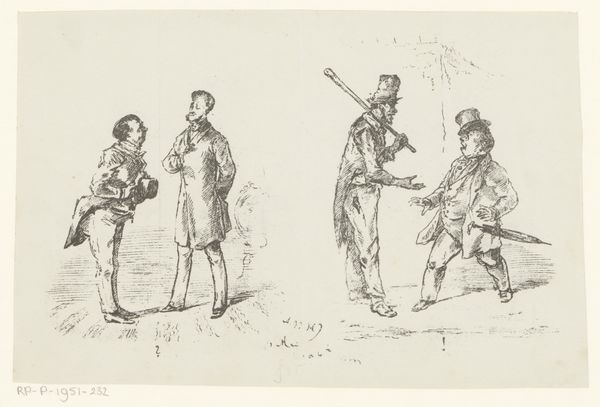
drawing, watercolor, pencil
#
portrait
#
drawing
#
imaginative character sketch
#
toned paper
#
light pencil work
#
quirky sketch
#
pencil sketch
#
dog
#
landscape
#
figuration
#
personal sketchbook
#
watercolor
#
idea generation sketch
#
romanticism
#
pencil
#
sketchbook drawing
#
genre-painting
#
storyboard and sketchbook work
#
sketchbook art
Copyright: Rijks Museum: Open Domain
Curator: Immediately, there's a sense of everyday observation that strikes me. Editor: Agreed. We're looking at "Man with Hat and Walking Stick, Seated on a Stone," a pencil and watercolor drawing done around 1840 by Johannes Tavenraat, residing here at the Rijksmuseum. It has the aura of a quickly-captured moment, maybe a preparatory sketch, wouldn't you say? Curator: Absolutely. It feels so... intimate, like stumbling upon a private page from the artist's notebook. The muted tones, the casual posture of the figure... it all whispers of quiet observation, a peaceful contemplation. Editor: Right. Notice how Tavenraat renders his subject, not idealized or posed, but slouching slightly, hat casting shadows. This unflinching depiction connects to broader conversations of realism in art at that time, and challenges dominant modes of representation. How do ordinary men fit into art? The emerging working class, colonialism. The dog adds an undeniable layer of social commentary to it, reflecting the social stratification. Curator: I'm more drawn to the…I don't know…melancholy lurking around this sketch. The gentle washes of color amplify the air of pensiveness. It feels like a solitary portrait amidst a changing landscape. I wonder, was Tavenraat also documenting his own solitude, mirroring that of his subject? Editor: Interesting, the Romantic gaze inward, for sure. Yet I also think the repetition of the figures—a study in different viewpoints—speaks to how individuals were categorized, objectified within burgeoning scientific and social frameworks in the 19th century. Tavenraat subtly reflects anxieties about changing roles. Curator: You've given me much to contemplate now! Editor: Good. That is why we are here, right? Thank you, as always!
Comments
No comments
Be the first to comment and join the conversation on the ultimate creative platform.
